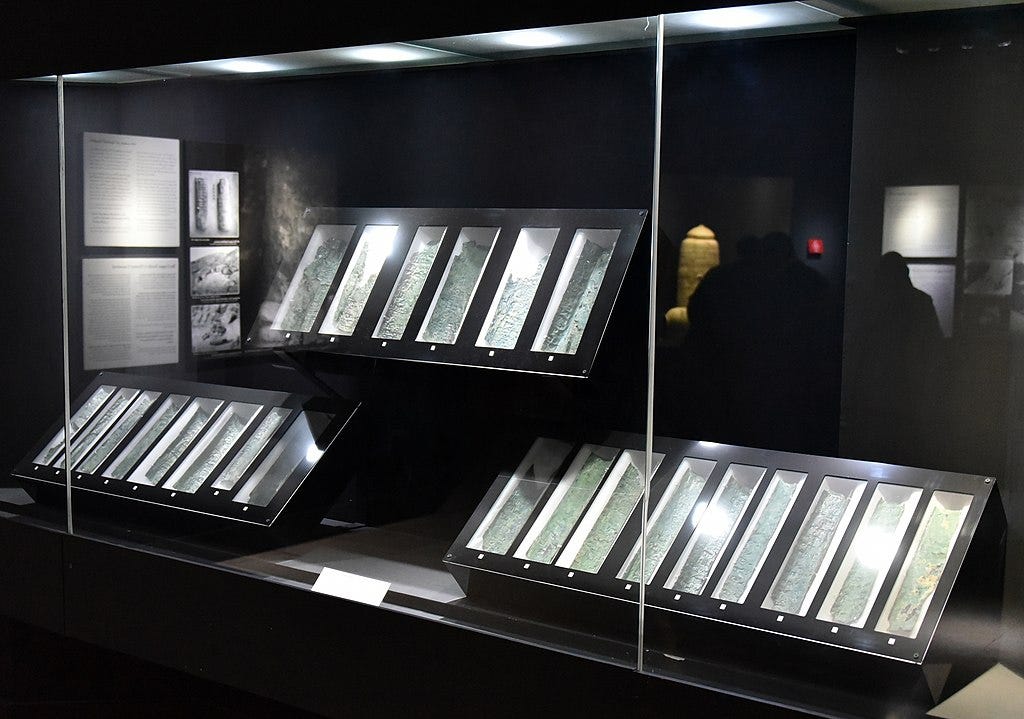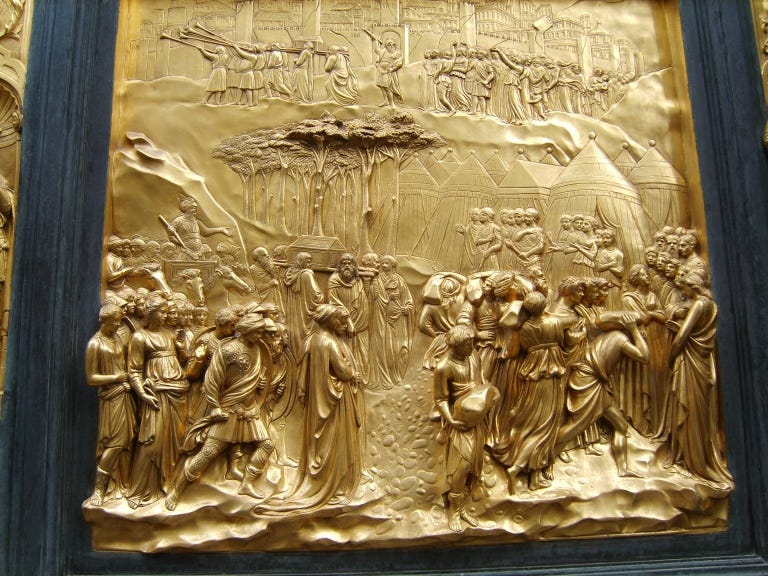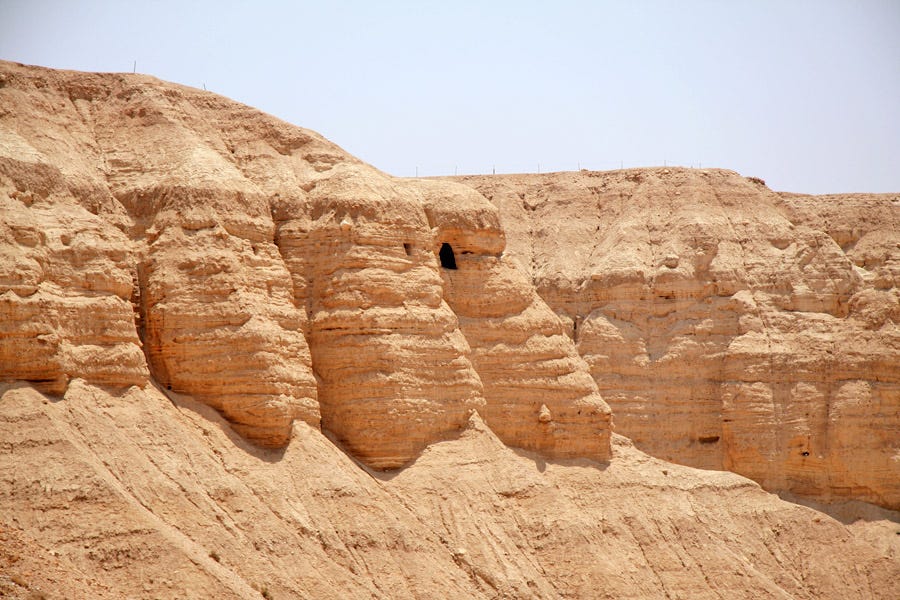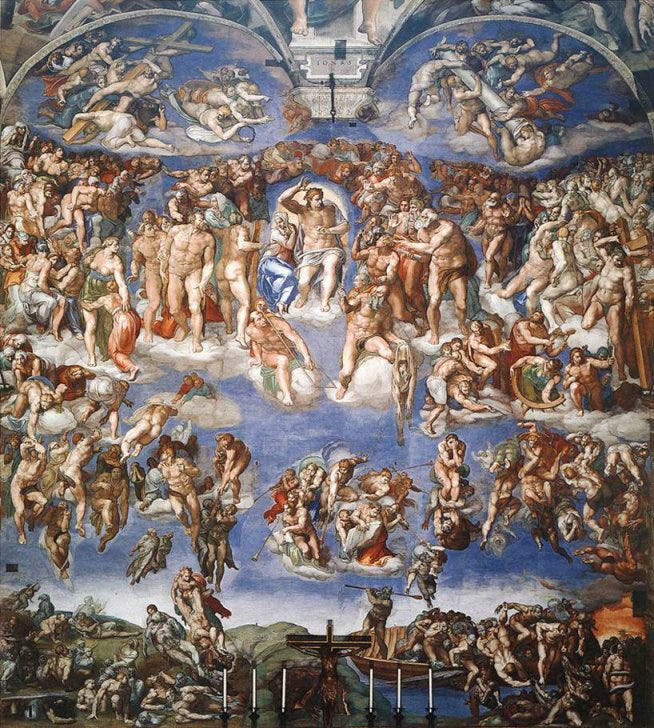The Dead Sea Scrolls: Prophecy Buried in Sand
Buried in silence for two thousand years, the Dead Sea Scrolls are the desperate prayers and defiant visions of a people who believed the world was ending and still chose to write.
Welcome to the June 19th edition of The Culture Explorer newsletter.
In the free section: The Dead Sea Scrolls: Prophecy Buried in Sand—a gripping dive into a forgotten desert sect, their apocalyptic visions, and the scrolls that reshaped how we read the Bible.
In the premium section: meet a mysterious ancient human species just given a face, discover why the Dead Sea Scrolls may be centuries older than we thought, and explore the banned book that once shaped early Christian thought—the Book of Enoch.
The Dead Sea Scrolls: Prophecy Buried in Sand
It started with a goat. Seriously. In 1947, a young Bedouin shepherd was chasing a lost goat near the cliffs of the Dead Sea. He tossed a rock into a cave and heard pottery shatter. When he climbed in, he found jars. Inside them were old scrolls, really old. He had no idea, but he had just stumbled onto one of the biggest religious discoveries of the 20th century.

Those scrolls became known as the Dead Sea Scrolls. They weren’t just scraps of ancient writing. They included copies of biblical texts, prayers, rules for daily life, and wild apocalyptic visions. Some were over 2,000 years old. And they weren’t stored in a library or a temple. They were hidden in desert caves by a group of Jews who believed the end of the world was coming.
That group most likely belonged to a sect called the Essenes. They had split off from the mainstream Jewish community. Why? Because they thought the temple in Jerusalem was corrupt. The priests were corrupt. The world was corrupt. So, they left everything behind and built a community near Qumran. Out there in the wilderness, they waited for God to act.

But while they waited, they wrote. A lot. They copied nearly every book of the Hebrew Bible, including multiple versions of Deuteronomy, Psalms, and Isaiah. One of the most famous finds was the Great Isaiah Scroll. It’s the oldest nearly complete copy of a biblical book. Scholars dated it to around 150 BCE. What’s amazing is that it’s nearly identical to later versions. That shows how stable Jewish scripture stayed through centuries of copying.
But they didn’t just copy scripture. They also wrote their own material. One scroll describes a massive final battle. It's called The War of the Sons of Light Against the Sons of Darkness. This wasn’t just poetic language. It includes actual battle formations, priestly roles, and the timing of attacks. They believed evil would be destroyed in a huge war, with God fighting on their side.

They also had a strict code of living. That’s recorded in The Community Rule, also known as Serek haYahad. It’s full of laws for members of their group—when to pray, what to eat, how to stay pure. It talks about a figure called the “Teacher of Righteousness.” This person led the group, taught them, and may have been persecuted. Some believed he would return.
They believed history had meaning. But not just surface-level meaning. They thought the Bible contained secret messages about their time. So, they wrote commentaries, called Pesharim, that decoded scripture. In one, based on the Book of Habakkuk, they refer to enemies like the “Wicked Priest” and the “Man of the Lie.” These were probably real people, rival leaders who opposed the community.
They also preserved books that never made it into the Bible. One of those was the Book of Enoch. It’s a wild text. It talks about angels who fall from heaven, secret knowledge, and judgment day. This book deeply shaped their worldview. It’s full of apocalyptic ideas—God will judge, the wicked will fall, and everything will be made right.
Another scroll, the Temple Scroll, imagines a perfect future temple. Not the one in Jerusalem. A better one. With strict laws and perfect design. They believed the real temple had become unholy. So they dreamed of a new one—one God would approve.
British scholar H.H. Rowley gave a famous lecture about these scrolls in 1957. He explained that apocalyptic thinking like this doesn’t just appear randomly. It often shows up when people lose power, when they feel pushed to the edges of history. That’s exactly what happened here. The Jews had been conquered again and again by the Babylonians, Persians, Greeks, and Romans. They lost their land and their temple. So, they started looking for cosmic answers.
And the Dead Sea Scrolls are full of those. They imagine judgment, resurrection, angels, and even multiple messiahs. Some texts say one messiah would be a priest. Another would be a king. Others expected a prophet. It wasn’t confusion, it was hope. They believed God would intervene. They just didn’t know exactly how.
This helps us understand the world Jesus was born into. The scrolls don’t mention Jesus. But they show that messianic expectations, end-of-days thinking, and religious division were already everywhere. Christianity didn’t appear out of nowhere. It grew from the same world.
And the scrolls reveal something else. Ancient Judaism wasn’t unified. It wasn’t just Pharisees or Sadducees. There were different sects like the Essenes, like this Qumran group. They all read scripture differently. They argued. They debated. The scrolls give us a front-row seat to that diversity.
Islam, which came centuries later, shares many of the same ideas—final judgment, angels, a coming prophet. The scrolls don’t directly connect to Islam. But they reflect the same kind of spiritual urgency. All three Abrahamic faiths—Judaism, Christianity, and Islam—are linked by this kind of thinking.
Today, people often argue about religion and politics, especially around Israel, Jerusalem, and the meaning of scripture. The Dead Sea Scrolls challenge us to slow down. To look deeper. They remind us that religion has always been complex. It’s been debated, argued, lived out in tension.
What can we take away from all this? For one, that scripture has a history. The Bible didn’t just fall from the sky. It was copied, preserved, interpreted by real people in real time. And two, apocalyptic belief isn’t just fear. It’s faith. When the world felt broken, these people didn’t give up. They believed something better was coming.
They hid their scrolls in caves to protect them. They probably thought their time was ending. They had no idea that two thousand years later, people would be reading their words again. But here we are.
And in those fragile scrolls, we find more than history. We find a voice. A warning. A hope.
Based on H.H. Rowley’s 1957 Ethel M. Wood Lecture, "Jewish Apocalyptic and the Dead Sea Scrolls."
Art

Book Corner
Learn the art of crafting compelling narratives that captivate audiences, spark engagement, and make your content unforgettable using The Ghostwriter’s Playbook. From mastering the opening hook to weaving seamless transitions, this playbook is your ultimate guide to storytelling success. Available on Gumroad for free.
Keep reading with a 7-day free trial
Subscribe to The Culture Explorer to keep reading this post and get 7 days of free access to the full post archives.







